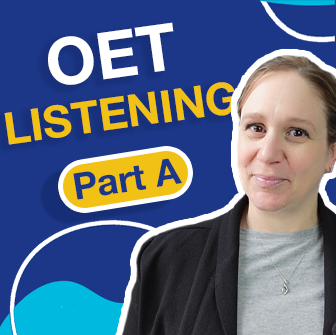
SLC expand online ESOL provision with South East Strategic Partnership for Migration
We’re delighted to have been commissioned to provide an online ESOL programme for refugee and migrant learners by the South East Strategic Partnership for Migration

Listening Part A of the Occupational English Test (OET) focuses on your ability to understand consultations between a healthcare professional and a patient. This is a critical skill for real-world clinical practice—and one that you can absolutely improve with the right strategies and preparation.
In this article, we’ll walk through essential techniques to help you succeed in OET Listening A, using insights from a sample consultation between a dermatologist and a patient.
Before the recording begins, use the short preparation time wisely. Here’s what to focus on:
✅ Notice the context – What is the setting? Who is speaking?
✅ Scan the headings – These give clues about the type of information you’ll hear.
✅ Review what’s already given – Identify completed parts of the notes.
✅ Look at the structure – See how the notes are organized (chronological, symptom-based, etc.)
✅ Predict the answers – Think about what kind of words are likely to fill the gaps (e.g., symptoms, times, actions).
This helps activate your medical knowledge and improves your listening focus when the audio starts.
During the audio, your task is to write the exact words spoken by the patient or healthcare professional. Listening A assesses your ability to:
🎧 The sample recording features a consultation with a dermatologist. You’ll complete notes on symptoms, triggers, and treatment history.
After completing the activity, don’t stop there!
🟢 Listen again while reading the transcript to identify any errors and improve your listening comprehension.
🟢 Pay close attention to paraphrasing—OET often rewords ideas between the notes and audio. For example:
This helps you develop the paraphrasing awareness that’s essential for scoring high in Listening A.
Here are some practical steps to build your skills:
📝 Practice with real consultations from the OET website
🎧 Always listen twice—once to complete the task, once to review
📖 Read transcripts carefully and highlight paraphrases
🔁 Revisit tricky sections and re-listen until you fully understand them
💬 Work with a study partner to compare notes and discuss challenging answers
See how this OET Listening A practice works in real time and test your skills!
Includes Listening A sample questions and transcript for focused practice.
Specialist Language Courses (SLC) are dedicated to helping healthcare professionals excel in the OET. Our expert-led courses focus on the specific language skills and test strategies needed to succeed. With personalised coaching, practice tests, and targeted exercises, we ensure you build the confidence and competence required for each OET sub-test. Join SLC to boost your chances of achieving the scores you need and advancing your healthcare career

We’re delighted to have been commissioned to provide an online ESOL programme for refugee and migrant learners by the South East Strategic Partnership for Migration

We are excited to announce our Black Friday Mega Sale, designed to help healthcare professionals prepare for their exams with high-quality, flexible online learning at

We’re delighted to announce a new partnership between Specialist Language Courses (SLC) and the University of Sharjah’s Clinical & Surgical Training Center (CSTC) — one
Get updates and get the latest materials on Medical English, OET and IELTS
